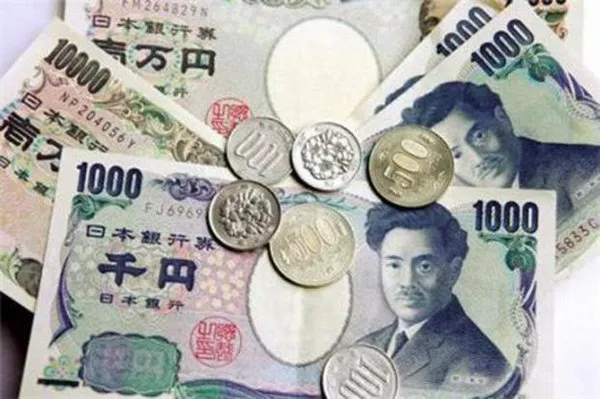The Japanese yen (JPY) stands as one of the most prominent currencies in global foreign exchange markets, with its symbol serving as a crucial identifier for traders and investors worldwide. Among its denominations, the 1000 yen note holds significant importance in financial transactions and everyday commerce. This article delves into the symbol for 1000 yen, shedding light on its significance, origins, and practical implications in the realm of finance and economics.
The Symbol for 1000 Yen: Exploring its Meaning and Significance
The symbol for 1000 yen is represented by “¥”, derived from the Japanese writing system known as Kanji. The character “¥” is pronounced as “yen” and symbolizes the unit of currency in Japan. Understanding the symbol’s meaning entails delving into the historical and cultural contexts that have shaped Japan’s monetary system.
Origins and Evolution of the Yen Symbol
The yen symbol traces its origins back to the Meiji Restoration era in the late 19th century when Japan embarked on modernizing its economy and adopting Western financial practices. The Meiji government introduced the yen as Japan’s official currency in 1871, replacing the previous monetary systems based on gold, silver, and rice.
Initially, the yen symbol resembled the character “圓,” which signified a round shape or a circle, reflecting the shape of coins used during that period. However, as Japan embraced Western influences and modernization, the symbol gradually evolved into its current form, “¥”, which is simpler and more universally recognizable.
The Symbol’s Role in Modern Japanese Economy
In contemporary Japan, the symbol for 1000 yen plays a pivotal role in various aspects of economic and financial activities. It serves as a fundamental unit of measurement in pricing goods and services, conducting transactions, and calculating financial assets and liabilities.
Furthermore, the yen symbol holds significance beyond Japan’s borders, as the yen is one of the major reserve currencies globally. Its stability and liquidity make it a preferred choice for central banks and international investors diversifying their portfolios.
Practical Implications for Traders and Investors
For traders and investors engaged in foreign exchange markets, understanding the symbol for 1000 yen is indispensable. The yen’s status as a major currency pair alongside the US dollar (USD/JPY) and the euro (EUR/JPY) underscores its importance in currency trading.
The symbol “¥” serves as a shorthand notation for quoting exchange rates and pricing financial instruments denominated in yen. Moreover, fluctuations in the yen’s value against other currencies can have profound implications for global markets, impacting trade balances, corporate earnings, and monetary policies.
Factors Influencing the Yen’s Value
Several factors influence the value of the yen in foreign exchange markets, shaping the dynamics of its symbol’s representation. These include:
Economic Indicators: Key economic indicators such as GDP growth, inflation rates, and employment data influence market sentiment towards the yen. Strong economic fundamentals often lead to a strengthening of the yen, reflected in its symbol’s exchange rate.
Monetary Policy: The Bank of Japan (BOJ) plays a crucial role in determining monetary policy, including interest rates and quantitative easing measures. Policy decisions by the BOJ can impact the yen’s value and, consequently, its symbol’s representation in currency markets.
Geopolitical Events: Geopolitical tensions, trade disputes, and global events can affect market volatility and investor sentiment towards the yen. Safe-haven flows often result in an appreciation of the yen, reflected in a higher value relative to other currencies.
Market Sentiment: Investor confidence and risk appetite influence currency markets, leading to fluctuations in the yen’s value. Speculative trading activities and macroeconomic trends can amplify short-term movements in the yen’s exchange rate.
The Symbol for 1000 Yen in Cross-Cultural Context
Beyond its economic significance, the symbol for 1000 yen embodies Japan’s rich cultural heritage and global influence. The yen symbol is recognized internationally, transcending linguistic and cultural barriers in the realm of finance and economics.
In Japanese popular culture, the yen symbol often features prominently in manga, anime, and video games, reflecting its ubiquitous presence in everyday life. Moreover, Japan’s status as a leading technological innovator has contributed to the widespread adoption of electronic payment systems and digital currencies, further enhancing the yen’s visibility on the global stage.
Conclusion
In conclusion, the symbol for 1000 yen represents more than just a unit of currency; it encapsulates Japan’s economic prowess, cultural identity, and global connectivity. Understanding the significance of the yen symbol is essential for navigating the intricacies of foreign exchange markets, conducting international trade, and appreciating the nuances of Japanese society.
As Japan continues to play a pivotal role in the global economy, the symbol for 1000 yen will remain a symbol of stability, innovation, and resilience in an ever-evolving financial landscape. By delving into its origins, evolution, and practical implications, we gain deeper insights into the multifaceted nature of the yen and its enduring impact on the world stage.
Related Topics:


